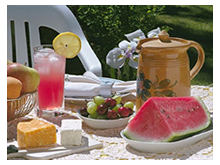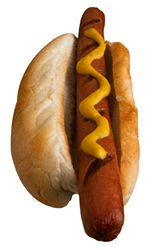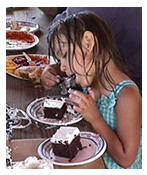Food Safety Tips for Picnics and Grilling

When a fine summer afternoon makes everyone "think picnic," you could find yourself organizing one. Never fear. Find the picnic hamper and the cooler. Then browse through these warm weather food care hints before you head to the store.
Particularly in warm weather, if you could just throw the refrigerator under one arm and take it with you, there wouldn't be any problem in caring for food to go. That's because the best way to fight food poisoning is to keep perishable foods--especially meat and poultry--cold between preparation and serving. So, for food safety, prevention is the watchword. By observing the cold storage, sanitation, and thorough cooking rules listed here, you can keep your food safe any time.
Picnic Shopping
- Buy perishable products last at the store and get them right home to the refrigerator, or into the portable ice-chest or insulated bag you're taking on the picnic. Never leave perishables in a hot car while you run other errands.
Cold Storage of Picnic Food
- For quick use, perishable products can be kept in the refrigerator for a few days. If the store wrap on meat and poultry is clean and not torn, leave it on. Otherwise, re-wrap products in clean plastic or aluminum wrap. Make sure the refrigerator is cooling food to 40oF or lower.
- For longer storage, freeze food. Wrap items tightly in heavy freezer foil or bags. Make sure your freezer registers 0oF or lower. NOTE: Mayonnaise-based meat, poultry and fish salads don't freeze well. Nor do tomatoes and lettuce.
Thawing - Do It the Night Before

- Contrary to common practice, it's not safe to thaw meat and poultry on the kitchen counter. Bacteria can multiply dangerously in the outer layers before inner areas are thawed.
Instead... - To allow plenty of time for larger cuts to thaw, take meat or poultry out of the freezer and put it on a refrigerator shelf a night or two before you need it. Small cuts will usually thaw in the refrigerator overnight.
- But if the meat is still partially frozen when you're ready to leave, no problem. Just cook it a bit longer at the picnic. And cook everything thoroughly. Hamburger patties, pork chops, and ribs should be cooked until all the pink is gone; poultry until there is no red in the joints. Fresh fish should be cooked until it "flakes" with a fork. Steak? If you like your steak rare or medium rare, just remember that there is a chance that some food poisoning organisms can survive such short cooking times.
Take What You Know About Kitchen Cleanliness Out to the Grill
- If there's no water faucet available, use disposable, wet hand-wipes to clean your hands before working with food.
- Keep bacteria on raw meat and poultry from spreading. Wash your hands again after working with raw meat or poultry and before handling other food.
- Use clean utensils to pick up cooked meat and poultry, and place the cooked food onto a fresh plate for serving. Don't re-use utensils, plates, or bowls you used with the raw product--for either the cooked meat or the other food.
Cooler? Ice? Check!
- For a relaxed, worry-free picnic, keep your perishable food--ham, potato or macaroni salad, hamburgers, hotdogs, lunch meat, cooked beef or chicken, deviled eggs, custard or cream pies--in a cooler.
- While all mayonnaise-based salads should be kept on ice, the mayonnaise you buy at the store is not a food poisoning villain. Its high acid content actually slows bacterial growth. But home-made mayonnaise, if made without lemon juice or vinegar, can be risky.
- The cooler should be well-insulated and packed with ice, or you can use a freeze-pack insert. Cold drinks in cans help keep other food cool too.
- When possible, place the cooler in the shade. Keep the lid on.
Leftovers?

- Put perishable foods back in the cooler as soon as you finish eating. Don't leave them out while you go for a swim or hike.
- When possible, put the chest in the passenger area of the car for the trip home. It's much cooler than the trunk!
- If you were gone no more than 4 or 5 hours, and your perishables were on ice except when cooked and served, you should be able to save the leftovers.
Click here for food safety activity pages for kids
Click here for more information on fighting bacteria.

- U.S. Department of Health and Human Services (HHS). Foodsafety.gov: Perfect Food Safe Picnics!, August 2, 2012.
- U.S. Food and Drug Administration (FDA). Eating Outdoors, Handling Food Safely, July 30, 2018.